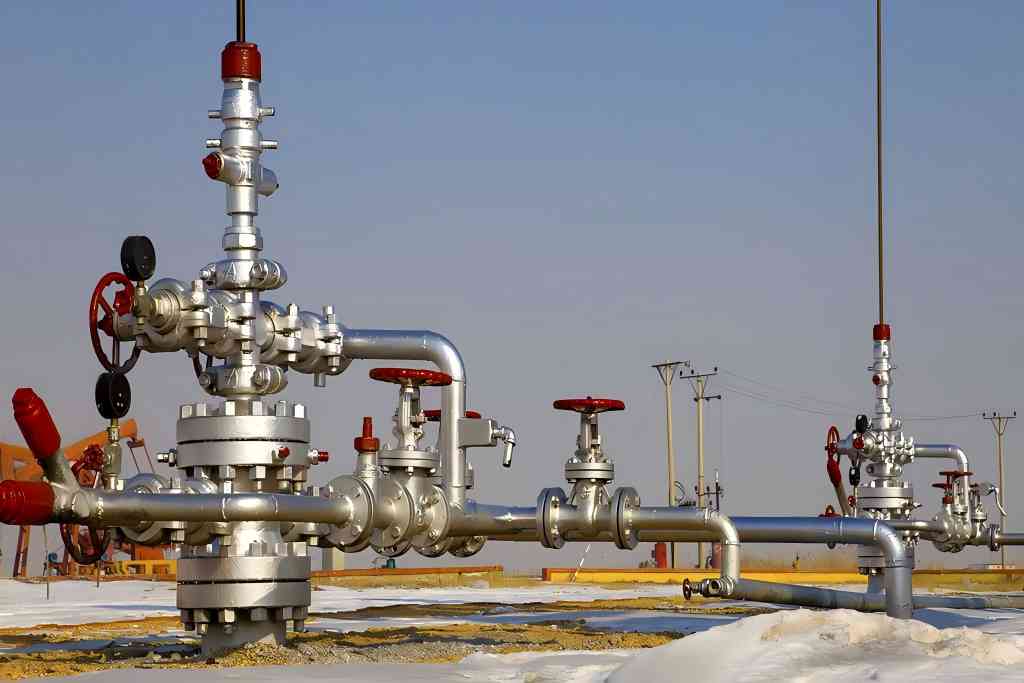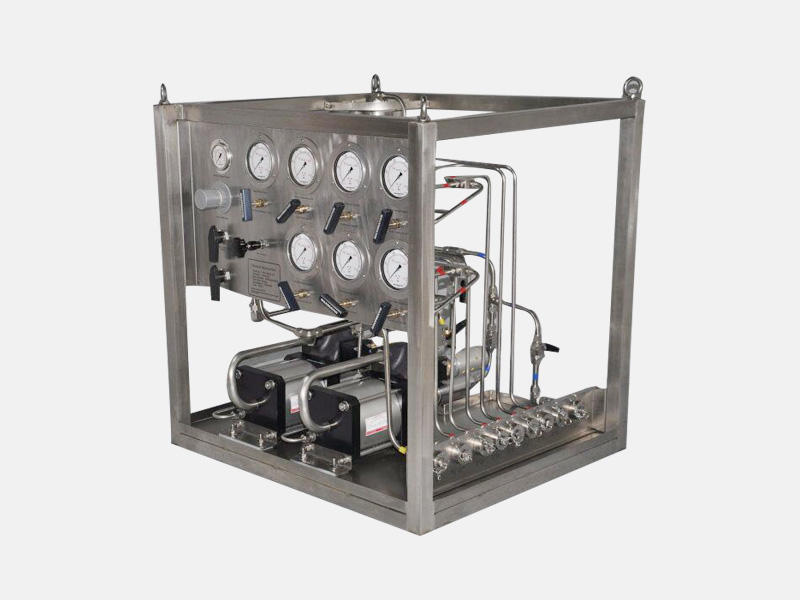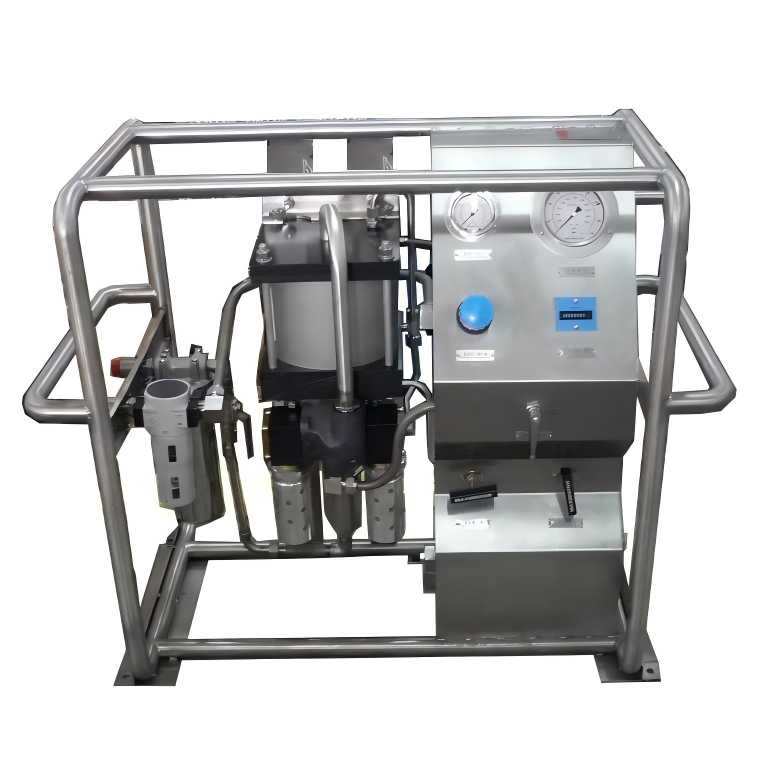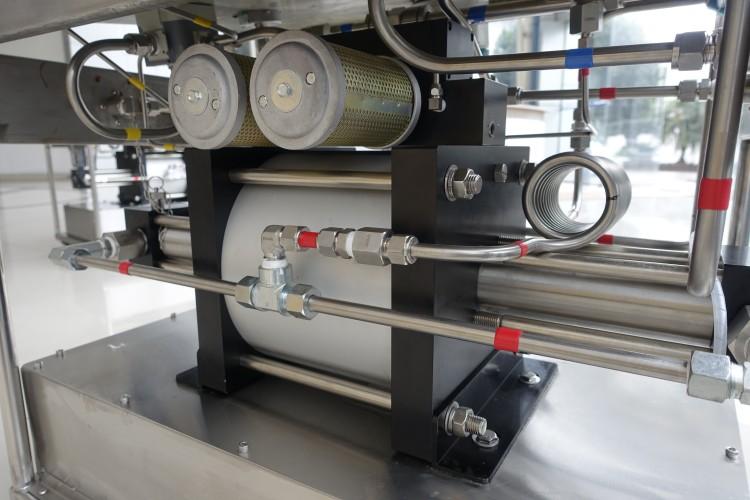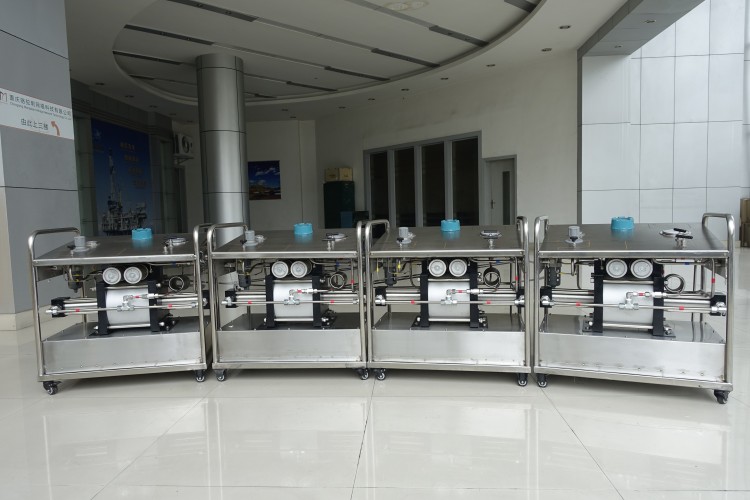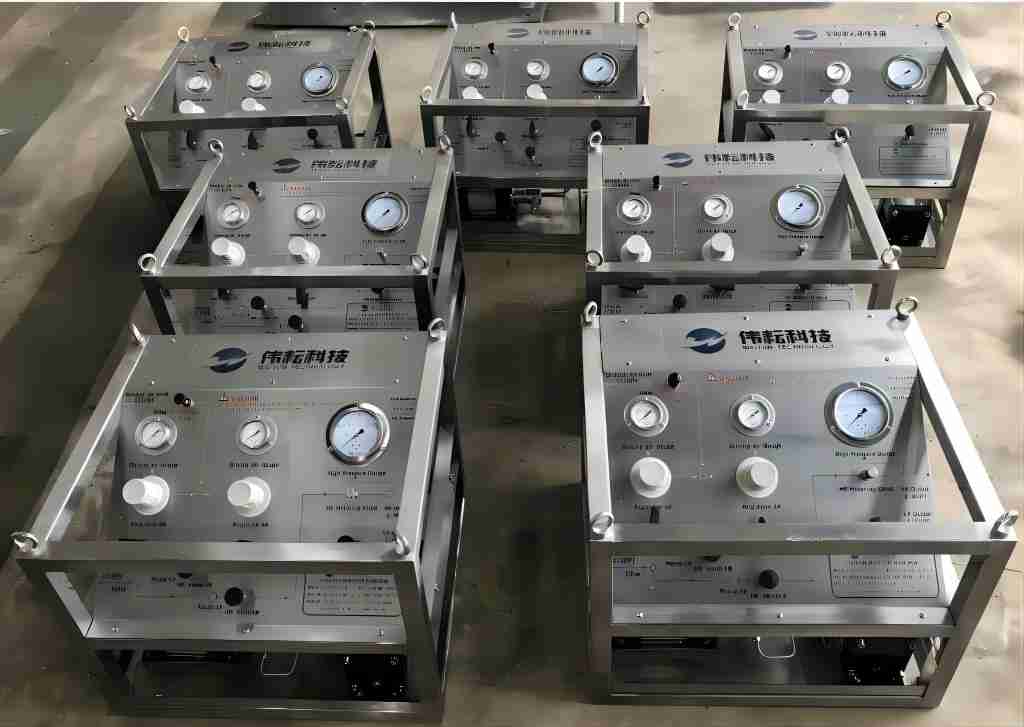Chemical Injection Skids: 4 Questions about Operation and Maintenance
Chemical injection skids are essential components in various industrial processes, used to precisely deliver chemicals into pipelines or vessels. Understanding the intricacies of their installation, startup, shutdown, maintenance, and troubleshooting is crucial for ensuring their optimal performance and safety. This article aims to address five key questions regarding the operation and maintenance of chemical injection skids.
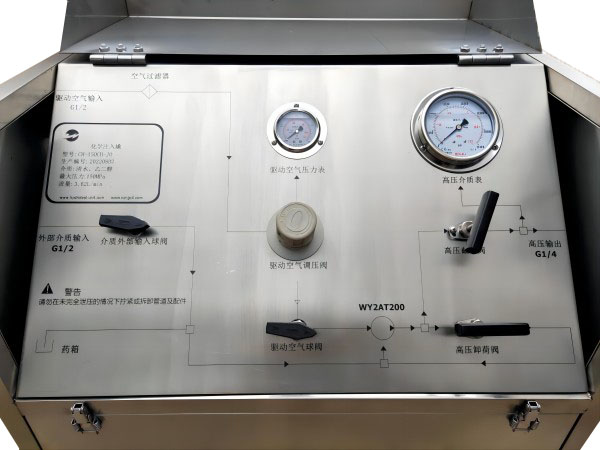
1. How is a Chemical Injection Skid Typically Installed?
Installing a chemical injection skid is an important process that ensures the system works safely and effectively. Here’s a simple overview of the main steps involved in the installation:
1. Site Preparation
Before installing the skid, it’s essential to prepare the location where it will be set up. This involves:
- Checking Space: Make sure there is enough room for the skid and access for future maintenance.
- Ensuring Support: Confirm that the ground can support the weight of the skid and any other equipment, like storage tanks and pipes. Sometimes, engineers are needed to check if the structure can bear the load.
- Access to Utilities: Ensure that necessary utilities, such as electricity, water, and compressed air, are available nearby.
2. Mechanical Installation
Once the site is ready, the next step is to install the chemical injection skid mechanically. This includes:
- Positioning the Skid: The skid is usually placed on a concrete base or a steel frame and should be aligned with existing pipes for efficient flow.
- Connecting Pipes: The skid is linked to the inlet and outlet pipelines, requiring secure connections to prevent leaks.
- Installing Additional Equipment: Other necessary components, such as chemical storage tanks, pumps, and valves, are installed in the right positions to ensure everything works smoothly.
3. Electrical Installation
After the mechanical setup, it’s time for electrical installation, which includes:
- Wiring: All electrical connections for pumps, sensors, and control systems are made according to design plans, following local electrical safety codes.
- Control System Setup: The skid often includes a control system to automate the chemical injection. This system needs to be connected to the relevant sensors to monitor performance.
4. Debugging
Once everything is installed, debugging takes place to ensure everything functions correctly:
- Testing: Conduct tests to check that all parts are working well and there are no leaks. This may include pressure tests for pipes and checking pump operations.
- Calibration: Adjust flow meters and measuring devices to ensure accurate chemical dosing, which is vital for maintaining the right chemical concentration.
- System Checks: Carry out a series of checks to ensure the skid runs according to the intended design, including monitoring flow rates, pressures, and temperatures.
5. Final Documentation
After the installation and testing are complete, proper documentation is important. This includes creating maintenance manuals, operation procedures, and detailed drawings of the installation. These documents serve as helpful references for future operation and maintenance tasks.
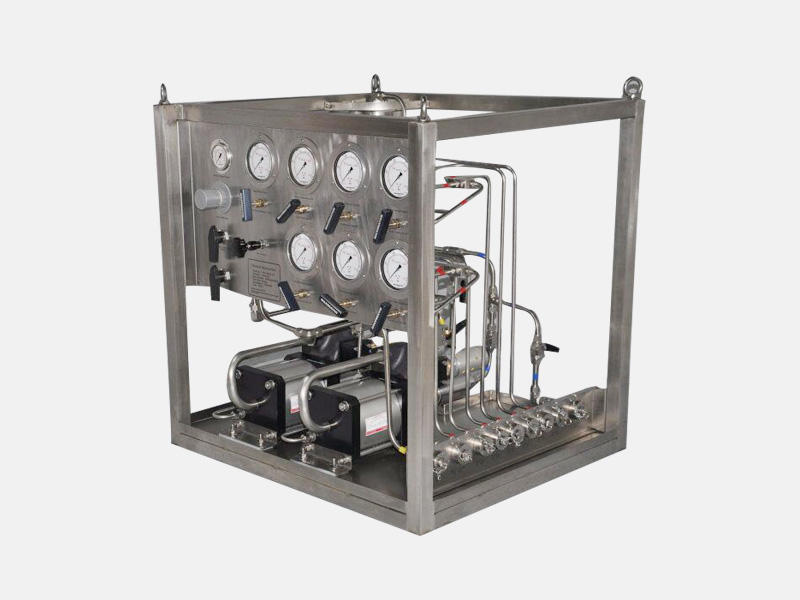
2. What Steps Are Involved in Starting Up and Shutting Down a Chemical Injection Skid?
Starting up and shutting down a chemical injection skid requires careful procedures to ensure safety and proper operation. Here’s a breakdown of the essential steps involved in each process:
1. Startup Procedure
1) Pre-Startup Checks:
- Inspect the skid for any visible issues, such as leaks, loose connections, or damaged components.
- Ensure that all safety equipment, including pressure relief valves and emergency shutdown systems, is in place and functional.
2) Verify Chemical Supply:
- Check the chemical storage tank to ensure that there is an adequate supply of the chemical to be injected.
- Verify that the tank is vented correctly to prevent pressure buildup.
3) Power Up the System:
- Turn on the electrical power to the skid.
- Check the control panel for any error messages or alerts.
4) System Initialization:
- Initialize the control system and ensure that it is communicating with all connected devices, such as pumps and flow meters.
- Run diagnostic tests to verify the proper functioning of all components.
5) Start the Pumps:
- Gradually start the injection pumps while monitoring pressure and flow rates.
- Adjust the pump speed or stroke length as needed to achieve the desired injection rate.
6) Monitoring:
- Continuously monitor the system for any abnormal readings or alerts. Adjust parameters as needed to maintain optimal performance.
- Confirm that the chemical injection rate meets process specifications and adjust flow meters accordingly.
2. Shutdown Procedure
1) Notify Personnel:
- Inform all relevant personnel of the impending shutdown, ensuring that any necessary safety protocols are observed.
2) Reduce Flow Rates:
- Gradually reduce the flow rates of the chemical injection to avoid surges or back pressure in the system.
3) Shut Down Pumps:
- Turn off the injection pumps. Allow any residual chemicals in the lines to flow back into the storage tank as needed.
4) Isolate the System:
- Close the inlet and outlet valves to isolate the skid from the process.
- Ensure that the pressure in the system is released before performing any maintenance or inspections.
5) Power Down the System:
- Switch off the electrical power to the skid and any associated equipment.
6) Document Shutdown:
- Record all relevant data regarding the shutdown process, including flow rates, pressures, and any issues encountered. This documentation is crucial for future reference and audits.
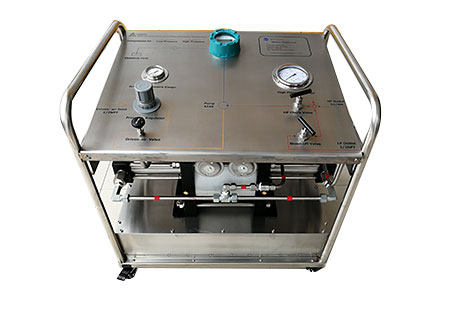
3. What Routine Maintenance and Inspections Are Required to Ensure the Proper Functioning of a Chemical Injection Skid?
Routine maintenance and inspections are vital for the reliable operation of a chemical injection skid. Regular attention helps prevent unexpected failures, ensures compliance with safety regulations, and extends the life of the equipment. Here are some key maintenance tasks and inspection routines:
1. Regular Inspections
- Visual Checks: Conduct regular visual inspections of the skid and surrounding area to check for leaks, corrosion, or physical damage to components. Ensure that the area around the skid is free from obstructions and that safety signage is visible.
- Check Fluid Levels: Regularly check the chemical storage tank levels to prevent running dry, which could lead to system damage or downtime.
- Monitor Performance Metrics: Track performance metrics, such as flow rates and pressures, to identify any deviations from normal operation. Regular data logging can help detect trends that may indicate potential issues.
2. Preventative Maintenance
- Calibration: Schedule periodic calibration of flow meters, pressure gauges, and other instrumentation to ensure accurate readings and dosing.
- Pump Maintenance: Follow the manufacturer’s recommendations for maintaining injection pumps, including lubrication and seal replacement. Pump performance should be evaluated regularly to ensure efficient operation.
- Valve Inspection: Inspect and test all valves for proper operation. This includes checking for leaks, stiffness, or wear and tear. Replace or repair faulty valves as needed.
- Filter Replacement: If the skid is equipped with filters, it should be inspected and replaced according to a defined schedule to prevent clogging and ensure consistent chemical flow.
3. Documentation and Record Keeping
- Maintenance Logs: Keep a detailed log of all maintenance activities, inspections, and repairs. This documentation provides insight into the skid’s performance and helps identify recurring issues.
- Compliance Records: Maintain records of inspections and maintenance to demonstrate compliance with safety and environmental regulations.
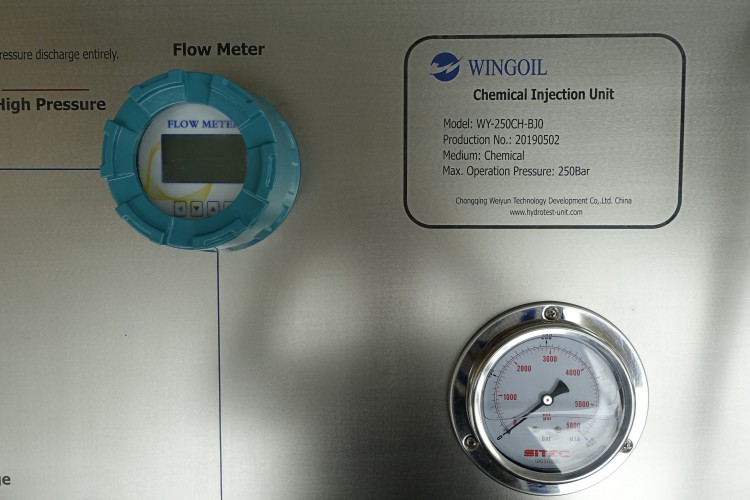
4. How Can Common Problems with Chemical Injection Skids Be Diagnosed and Resolved?
Chemical injection skids can experience a variety of issues that affect their performance. Diagnosing and resolving these problems quickly is essential to minimize downtime and ensure ongoing operational efficiency. Here are some common problems, their symptoms, and potential solutions:
Problem 1: Inconsistent Chemical Injection Rates
Symptoms:
- Fluctuating flow rates and pressures.
- Variation in chemical concentration in the pipeline.
Diagnosis and Solutions:
- Check Flow Meters: Inspect and calibrate flow meters to ensure accurate readings. A faulty meter can lead to incorrect dosing.
- Inspect Valves and Pumps: Check for blockages or malfunctions in valves and pumps. Ensure that the pumps are operating within their specified range and that no air is trapped in the lines.
- Evaluate Chemical Quality: Poor-quality chemicals can affect injection rates. Verify that the chemical being used is suitable for the application.
Problem 2: Leaks in the System
Symptoms:
- Visible signs of leakage around fittings, hoses, or tanks.
- Pressure drops in the system.
Diagnosis and Solutions:
- Perform Visual Inspections: Regularly inspect all connections, flanges, and hoses for signs of wear or damage.
- Tighten Connections: Ensure that all fittings and connections are properly tightened to prevent leaks. Replace worn-out seals and gaskets as needed.
- Pressure Testing: Conduct pressure tests on the system to identify leaks. Use appropriate sealants or replace damaged components to resolve any identified leaks.
Problem 3: Pump Failures
Symptoms:
- Pumps not starting or stopping unexpectedly.
- Unusual noises or vibrations from the pump.
Diagnosis and Solutions:
- Check Power Supply: Ensure that the power supply to the pump is stable and that there are no blown fuses or tripped breakers.
- Inspect Pump Components: Examine the pump for blockages or wear. Replace worn or damaged components, such as seals and impellers.
- Review Operating Conditions: Verify that the pump is operating within its specified limits. Adjust the speed or stroke length as necessary to match system demands.
Problem 4: System Control Failures
Symptoms:
- The control panel displays error messages or alerts.
- Automation functions are not responding.
Diagnosis and Solutions:
- Inspect Control Wiring: Check for loose or damaged connections in the control wiring. Reconnect or repair any issues.
- Review PLC Programming: Ensure that the PLC or control system is programmed correctly. Re-upload software or consult the manufacturer for assistance if necessary.
- Perform System Reboots: Sometimes, a simple reboot of the control system can resolve transient errors.
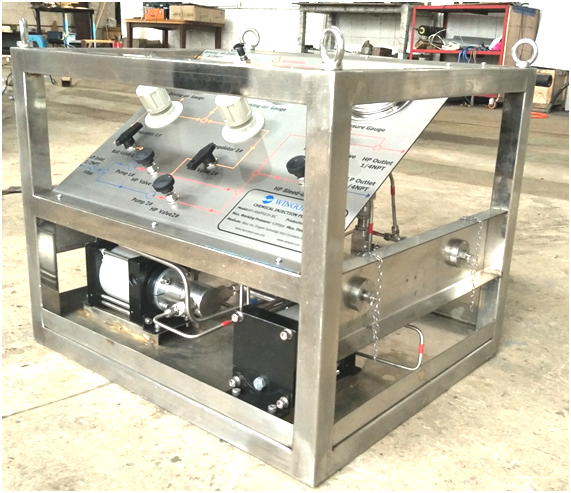
The proper operation and maintenance of chemical injection skids are crucial for ensuring the efficiency, safety, and reliability of industrial processes. By following best practices for installation, adhering to startup and shutdown procedures, conducting regular maintenance, and troubleshooting common problems, operators can maximize the performance of their chemical injection systems. Consistent attention to these details not only extends the lifespan of the equipment but also helps prevent costly downtime and ensures compliance with environmental and safety standards.

